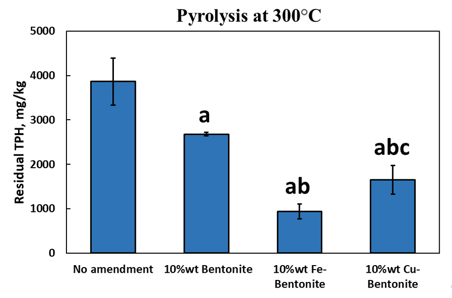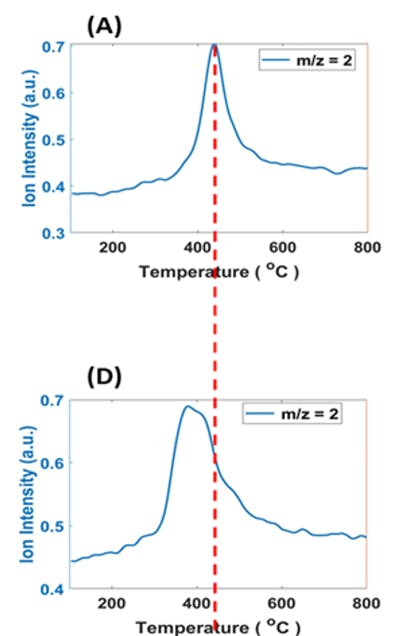Pyrolytic Remediation of Soils: The Catalytic Role of Clays and Metals
Lowering the Pyrolysis
Temperature

Very high TPH conversions achieved with 10% Fe-bentonite amendment at the very low temperature of 300 oC.

H2 intensities from TG-MS pyrolysis of (A) unamended contaminated soil and (D) contaminated soil amended with 10%wt Fe-bentonite. The temperature shift provides strong evidence of the catalytic effect of Fe.
